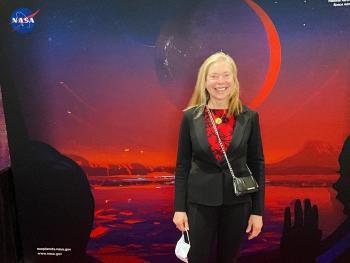First Images from JWST
Mary Barsony
Darwin 103
4:00 PM

These were of the Carina Nebula star-forming region, the gravitationally interacting galaxies of Stephan's Quintet, the planetary nebular end-of-life phase of Sun-like stars captured in the image of the Southern Ring Nebula, the spectrum of the exoplanetary atmosphere of Wasp 96- b, and the deepest and sharpest images of distant galaxies ever observed in the infrared through the gravitational lens of SMACS 0723. The current frontiers of knowledge in each of the above astronomical sub-fields will be provided as background in order to appreciate what you are looking at in each image.
Speaker Bio
Mary was Principal Investigator at the Carl Sagan Center for the Study of Life in the Universe at the SETI Institute and Adjunct Professor of Physics and Astronomy at San Francisco State University. She has also served as a faculty member in the physics departments at U.C. Riverside, Harvey Mudd College, and USC, preceded by postdoctoral appointments at Harvard and Berkeley. Her Physics Ph.D. is from Caltech and S.B. in physics from MIT.
Dr. Barsony’s research focused on all aspects of star-formation, approached through multi-wavelength studies of the closest star-forming regions to Earth.
Through submillimeter observations in the early '90's in collaboration with colleagues from the U.K. and France, Dr. Barsony discovered the first true protostar--an object surrounded by infalling gas in the process of accumulating the mass it will have as a full-fledged star. Protostars are the focus of intense study with state-of-the-art instruments, on the Keck telescopes in Hawaii, JWST, and the Atacama Large Millimeter/Submillimeter Array (ALMA)--consisting of 66 radio telescopes operating as one at 16000 ft. elevation in the driest desert on Earth, the Atacama, in Chile.
Dr. Barsony has investigated the formation mechanisms and properties of free-floating planets in the nearest star-forming regions to Earth, with the Hubble Space Telescope, with follow-up spectroscopy from the ground-based Keck I telescope atop Mauna Kea in Hawaii. While at JPL in the Summer of 2000, she co-authored the White Paper convincing NASA to deploy a mid-infrared instrument on JWST.

